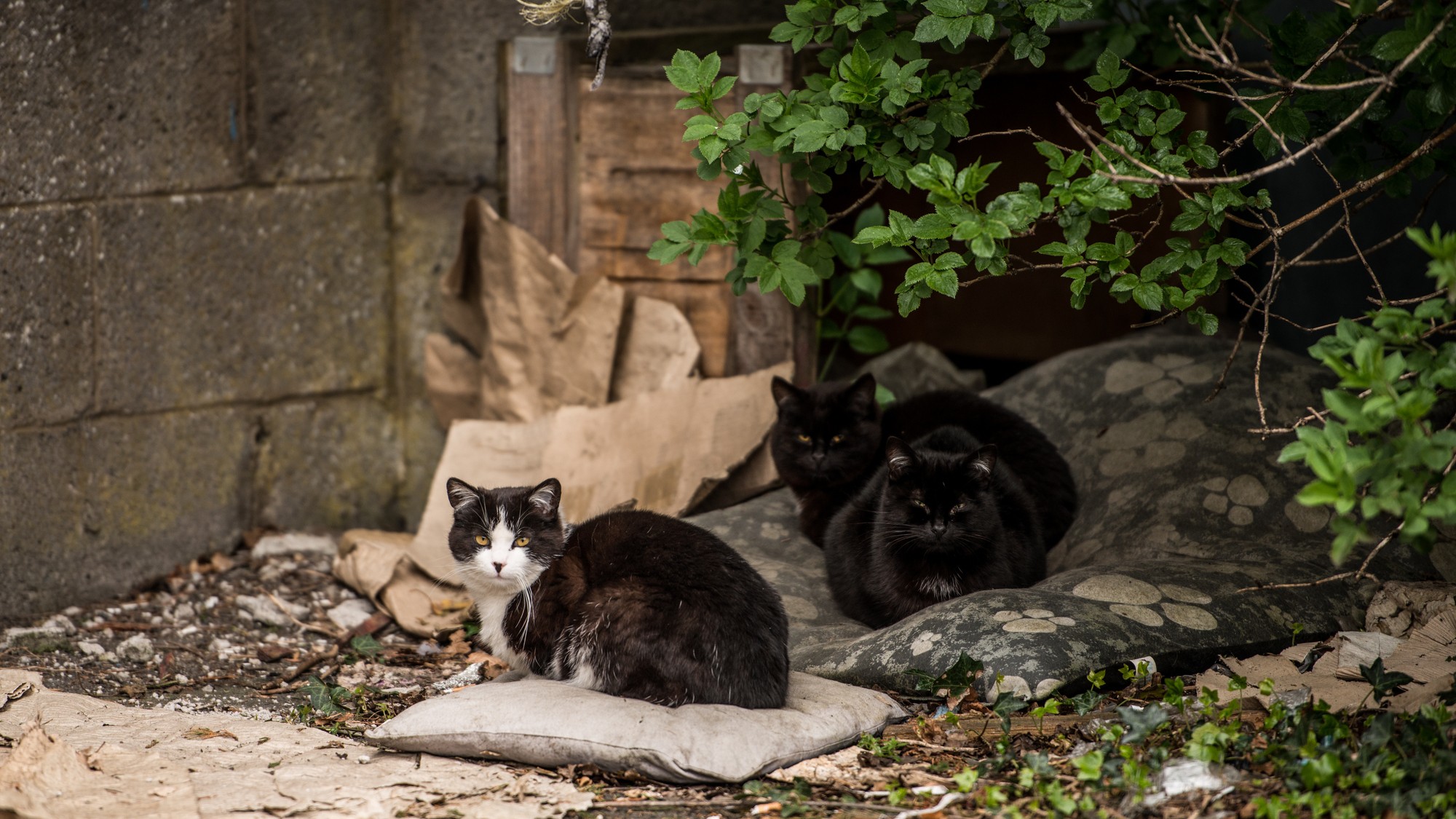5 of the most invasive animal species on the planet
Invasive species are a danger to ecosystems all over the world


An invasive species is an organism that is "non-native (or alien) to the ecosystem under consideration," and whose introduction "causes or is likely to cause economic or environmental harm or harm to human health," said the U.S. Department of Agriculture. The species can be introduced to a new area through "ship ballast water, firewood, accidental release, and by people."
Invasive species can cause a great deal of harm to an ecosystem, even causing the extinction of native species. They also tend to grow in population rapidly as the non-native environment doesn't have natural predators to manage numbers.
1. Spotted lanternfly

Spotted lanternfly close-up
Spotted lanternflies (Lycorma delicatula) are native to China but have run rampant all across the northeastern U.S., prompting experts to advise people to kill them. While they are harmless to humans and animals, they are a danger to over a hundred plant species. It feeds "on a wide range of fruit, ornamental and woody trees, with tree-of-heaven being one of the preferred hosts," said the U.S. Department of Agriculture. In addition, they cause "serious damage including oozing sap, wilting, leaf curling and dieback in trees, vines, crops and many other types of plants," said the Pennsylvania Department of Agriculture. "The expansion of this pest has been fueled by its ability to hitch rides undetected on cargo and passenger vehicles," said Earth.com.
Subscribe to The Week
Escape your echo chamber. Get the facts behind the news, plus analysis from multiple perspectives.

Sign up for The Week's Free Newsletters
From our morning news briefing to a weekly Good News Newsletter, get the best of The Week delivered directly to your inbox.
From our morning news briefing to a weekly Good News Newsletter, get the best of The Week delivered directly to your inbox.
2. Feral cat

Stray feral cats outside
While we view cats (Felis catus) as beloved furry friends, they are actually classified as an invasive species. Feral cats have been "incredibly devastating" to native animals in Australia, said West Australia Environment Minister Reece Whitby, adding that the country is "trying to give native species a fighting chance against this incredible, voracious predator," Newsweek said.
A 2013 study published in the journal Nature Communications said that free-ranging domestic cats, mostly strays and feral cats, "kill 1.3–4.0 billion birds and 6.3–22.3 billion mammals annually." To combat populations, experts have adopted the TNR method (trap, neuter, return) which aims "to limit cat population growth by eliminating reproduction," said the U.S. Department of Agriculture, or in some cases poisoning them.
3. Burmese python

Burmese python head
Burmese pythons (Python molurus bivittatus) are one of the largest snake species and are native to India, lower China, the Malay Peninsula and some islands of the East Indies, according to the Florida Fish and Wildlife Conservation Commission. The snake has preyed on a number of mammals, birds, and reptiles in Florida to the point where the state has allowed for the species to "be captured and humanely killed year-round and without a permit or hunting license."
The pythons have caused "severe mammal declines in Everglades National Park," said the U.S. Geological Survey (USGS). They eat both native and non-native species, including endangered species. "Populations of raccoons had dropped 99.3%, opossums 98.9%, and bobcats 87.5% since 1997," said the USGS. "Marsh rabbits, cottontail rabbits and foxes effectively disappeared."
4. European starling

European starling on branch
These starlings (Sturnus vulgaris) are birds native to Europe, southwest Asia, and northern Africa. They were first introduced in the U.S. in the 1890s. They are now "one of the most abundant birds in North America," said the New York Invasive Species Information. The birds "compete with native species as well as destroy crops," and are "prolific breeders."
The birds have caused problems for agriculture at an estimated $800 million per year. Also, starlings "eat cattle rations and destroy fruit and grain crops, "carry various diseases which may be transmissible to humans, other birds (including poultry), and livestock." The birds are adaptable in many environments and forage for a variety of food.
5. Red imported fire ant

Red imported fire ant close-up
Red imported fire ants (Solenopsis invicta) were found in Italy and could cause "devastating and costly impacts on biodiversity, crops and human health," all over Europe, Euronews said. The species is also rapidly spreading throughout the continent because "the climate in half of Europe’s urban areas is already suitable for the species."
The species is native to South America and has a painful sting that could cause burning and, in more severe cases, chest pains, nausea and dizziness. Climate change is also increasing the suitable range for these insects. "This is especially concerning because many of the cities, including London, Amsterdam, and Rome, have large seaports, which could allow the ants to spread rapidly to more countries and continents," author of a 2023 study discussing the insects, Roger Vila, said to The Independent.
A free daily email with the biggest news stories of the day – and the best features from TheWeek.com
Devika Rao has worked as a staff writer at The Week since 2022, covering science, the environment, climate and business. She previously worked as a policy associate for a nonprofit organization advocating for environmental action from a business perspective.
-
 July 12 editorial cartoons
July 12 editorial cartoonsCartoons Saturday's political cartoons include generational ennui, tariffs on Canada, and a conspiracy rabbit hole
-
 5 unusually elusive cartoons about the Epstein files
5 unusually elusive cartoons about the Epstein filesCartoons Artists take on Pam Bondi's vanishing desk, the Mar-a-Lago bathrooms, and more
-
 Lemon and courgette carbonara recipe
Lemon and courgette carbonara recipeThe Week Recommends Zingy and fresh, this pasta is a summer treat
-
 Scientists and Peter Jackson attempt to bring back an extinct bird — kind of
Scientists and Peter Jackson attempt to bring back an extinct bird — kind ofIn the Spotlight Colossal Biosciences was the company behind the 'resurrected' dire wolves
-
 Scientists want to regrow human limbs. Salamanders could lead the way.
Scientists want to regrow human limbs. Salamanders could lead the way.Under the radar Humans may already have the genetic mechanism necessary
-
 A potentially mutating bat virus has some scientists worried about the next pandemic
A potentially mutating bat virus has some scientists worried about the next pandemicUnder the Radar One subgroup of bat merbecovirus has scientists concerned
-
 Dehorning rhinos sharply cuts poaching, study finds
Dehorning rhinos sharply cuts poaching, study findsSpeed Read The painless procedure may be an effective way to reduce the widespread poaching of rhinoceroses
-
 A zombie volcano is coming back to life, but there is no need to worry just yet
A zombie volcano is coming back to life, but there is no need to worry just yetUnder the radar Uturuncu's seismic activity is the result of a hydrothermal system
-
 'Bioelectric bacteria on steroids' could aid in pollutant cleanup and energy renewal
'Bioelectric bacteria on steroids' could aid in pollutant cleanup and energy renewalUnder the radar The new species is sparking hope for environmental efforts
-
 Sea lion proves animals can keep a beat
Sea lion proves animals can keep a beatspeed read A sea lion named Ronan beat a group of college students in a rhythmic dance-off, says new study
-
 Earth's oceans were once green and could one day turn purple
Earth's oceans were once green and could one day turn purpleUnder the radar The current blue may be temporary
